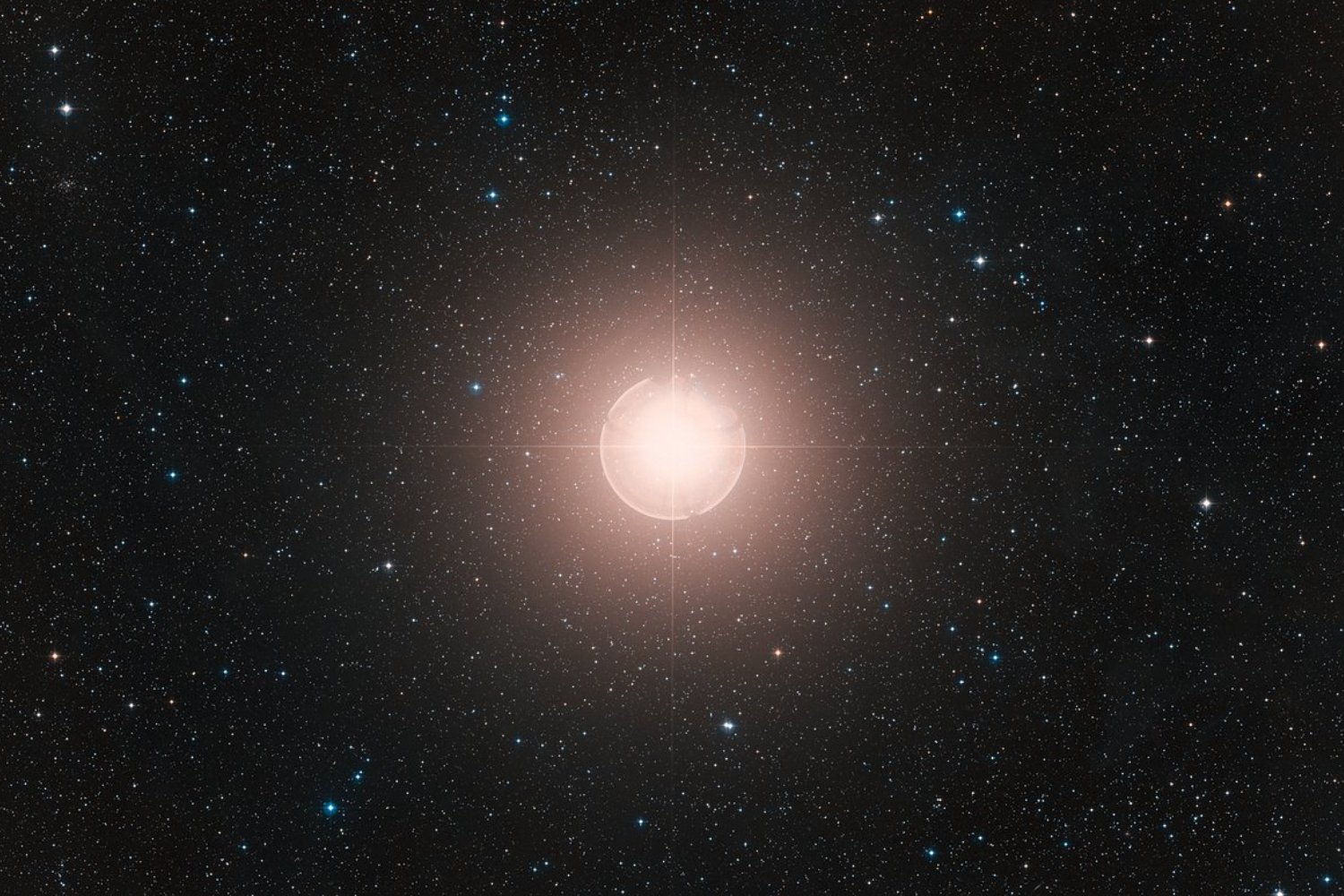
The yearslong dimming and brightening sample of the large star Betelgeuse (don’t fear—that’s simply the second time we’ve stated it!) could also be as a result of a a lot tinier star orbiting the crimson supergiant, a staff of astronomers report.
The companion star, if it exists, is roughly the identical mass of our Solar, and will clarify Betelgeuse’s long secondary period (LSP)—a 2,170-day (6-year) cycle throughout which the supergiant dims and brightens. You see, Betelgeuse just isn’t in sync with itself—its elementary mode (or FM, i.e., the first means a star pulsates or vibrates) is simply 420 days long, a lot faster than this different, languid pulsation sample. The latest staff posits {that a} second, smaller star in a binary system with Betelgeuse could possibly be accountable for the dissonant patterns. The analysis, hosted on the preprint server arXiv, just isn’t but peer-reviewed.
“A companion will make each stars transfer round their frequent middle of mass, explaining the speed variations; and it’ll affect the mud surrounding Betelgeuse, explaining the brightness variations,” stated László Mólnar, an astronomer at Hungary’s Konkoly Observatory, in an e-mail to Gizmodo. “This undoubtedly modifications how we take a look at Betelgeuse: It was onerous to know at first {that a} star this nicely studied might need a but undiscovered companion!”
Betelgeuse is a 10-million-year-old star (a far cry from our Solar’s 5-billion-odd years) positioned some 642 light-years from Earth that’s particularly vivid within the night time sky. Betelgeuse is between 15 to 20 times the mass of the Solar, relying on who you ask. However one truth is indeniable: the enormous star is working on borrowed time, and can ultimately explode in a rip-roaring supernova—the occasion that marks the tip of a star’s life, save for the neutron star or black gap that’s sometimes left behind.
You see, Betelgeuse is burning by its gas significantly sooner than the golden blob of gasoline on which our life relies upon (our Solar is slated to die in about 5 billion years). When Betelgeuse runs out of gas to burn, it should expel itself outwards, and what’s left of the star will collapse into an ultra-dense neutron star or a black gap, relying on the quantity of fabric that doesn’t get caught up within the supernova itself.
“If alpha Ori B, to which our staff has given the pet title ‘BetelBuddy,’ is found, it will completely verify that the [long secondary period] is the 2100-day periodicity and the 420-day periodicity is the [fundamental mode], which locations Betelgeuse firmly in its core helium burning part,” stated research co-author Meridith Joyce, an astronomer on the College of Wyoming, in an e-mail to Gizmodo. “If Betelgeuse is in its core helium burning part, it has about 100,000 years to go earlier than a supernova.”
Lately, Betelgeuse has began performing humorous. From late 2019 till early 2020, the star dimmed to simply 40% its regular brightness—an occasion dubbed The Great Dimming. Later, scientists decided the dimming was as a result of an enormous chunk of floor materials spewed up from the star that then cooled right into a mud cloud that obscured the star from observers on Earth.
Jared Goldberg, an astronomer on the Flatiron Institute and lead writer of the analysis, advised Gizmodo that some have prompt LSPs of stars are attributable to faint companion stars that drag mud behind them, eclipsing the bigger star Nonetheless, the staff discovered that Betelgeuse and different stars with LSPs dim when their companion stars are behind the first star. Ergo, no dust-dragging could possibly be accountable. However after contemplating different explanations, the staff doubled down on the companion speculation: Such a sidecar star (or ‘Betelbuddy’ for our related supergiant) might modulate the mud gravitationally, or irradiate it, as a substitute of dragging it behind them.
“We should remember there have been a number of detection claims of alpha Ori B (Betelgeuse‘s companion) over the twentieth century,” stated Miguel Montargès, an astronomer on the Sorbonne Université and a co-author of a 2021 paper in Nature describing the mud enshrouding Betelgeuse, in an e-mail to Gizmodo. “Each has been confirmed mistaken.”
But it surely “wouldn’t be shocking for Betelgeuse to have a companion,” Montargès, who was not affiliated with the latest paper, added. “It’s a huge star (above 8 photo voltaic lots), and statistics inform us that such stars are hardly ever born and not using a sibling.”
“All of us wish to discover Betelgeuse‘s companion,” Montargès stated, including that the analysis “might have implications for our understanding of crimson supergiants.”

Final yr, one staff of researchers posited that Betelgeuse would go supernova much sooner than earlier estimates: in simply tens of years, or possibly a pair centuries, as a substitute of in tens of hundreds of years. However different astronomers pushed again, saying that Betelgeuse is firmly in its helium-burning part (as Joyce famous), slightly than the core carbon burning part that might mark the tip instances for the supergiant.
“The companion itself doesn’t influence whether or not Betelgeuse explodes tomorrow or within the yr 102024,” Goldberg added. “Nonetheless, discovering the companion helps us predict higher when Betelgeuse will explode.”
However it is going to be troublesome to in the end uncover such a “BetelBuddy.” That’s as a result of Betelgeuse is “extremely, stupidly vivid,” Mólnar stated. “A smaller, Solar-sized star can really be nearly undetectable subsequent to it.”
Fortunately, “nearly undetectable” leaves wiggle room, extra wiggle room than darkish matter, which is actually invisible. “To me, an particularly thrilling risk is to attempt to use the identical expertise we use to instantly picture faint planets round different stars to attempt to detect companions round actually vivid stars,” Goldberg stated. A few of these exoplanets are spotted as they cross in entrance of their host stars; the planetary our bodies themselves block the quantity of sunshine that telescopes see from the star, evincing their existence.
Extra measurements of the massive star’s brightness may be taken, however they’ll should be rigorously parsed to see an enigmatic Solar-sized buddy amid Betelgeuse’s good glare. Nonetheless, such a discovery would additionally imply that Betelgeuse isn’t as far alongside in its burn as some have prompt.
Overlook saying Betelgeuse 3 times—that received’t get the star to lastly blow its prime. Plus, it doesn’t actually have as good a hoop to it as “Betelgeuse, Betel…buddy!”
This Article is Sourced Fromgizmodo.com






